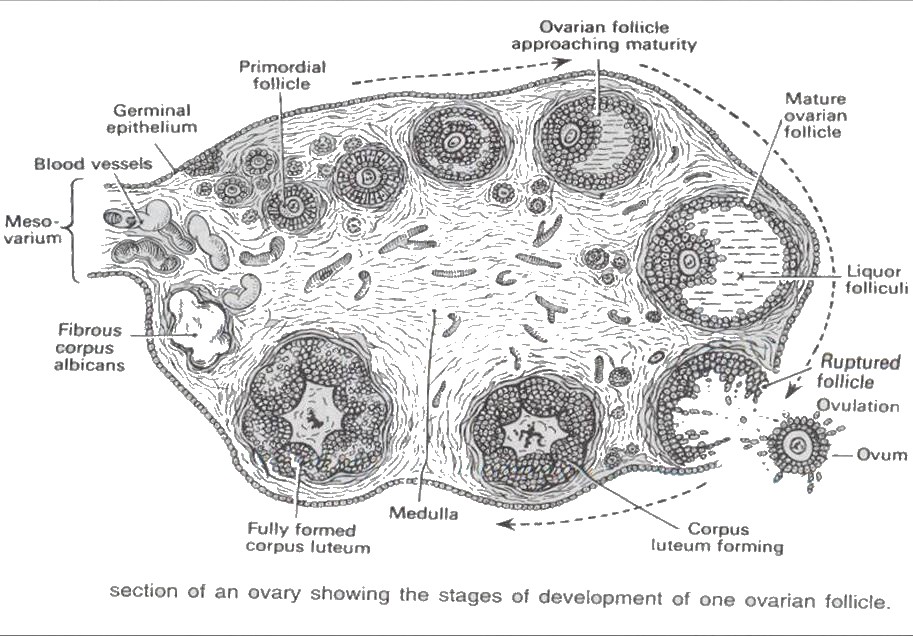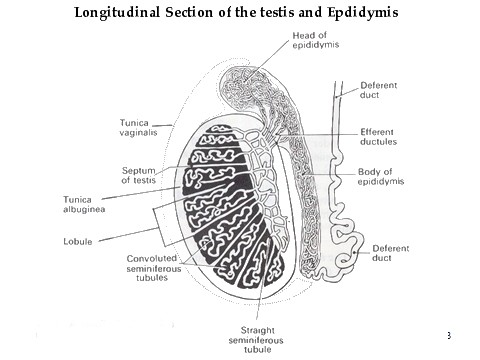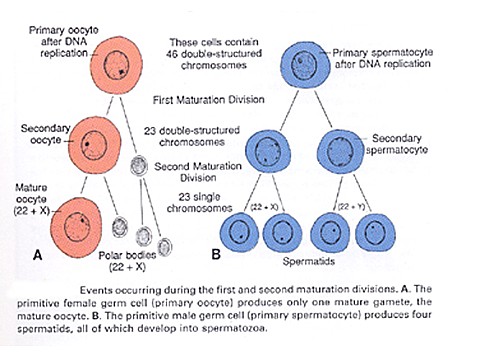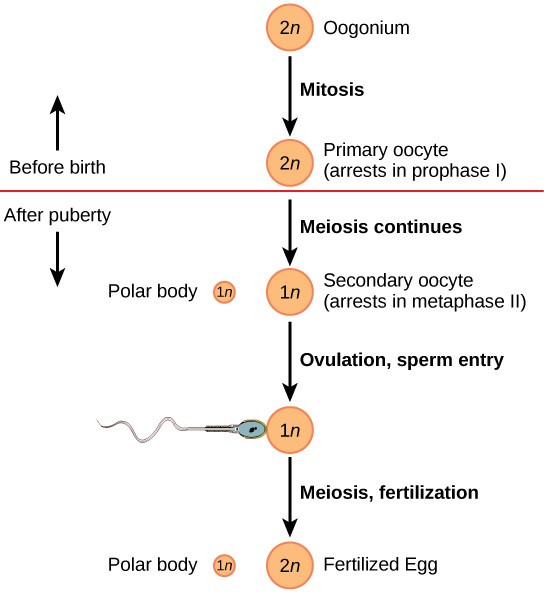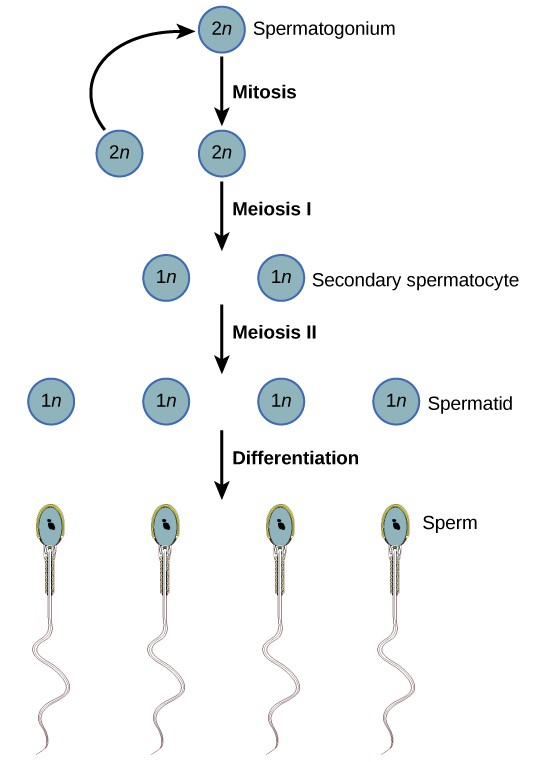Gametogenesis
Definition
Conversion of Germ Cells Into Male and Female Gametes in the testes and ovaries.
Gametogenesis starts even before the child is born
Gametogenesis is divided into four phases:
1. Extra-gonadal origin of primordial germ cells
2. Proliferation of germ cells by mitosis and migration into the male and female gonads (testis and ovary)
3. Meiosis
4. Structural and functional maturation of the ova and spermatozoa
Primordial Germ Cells
o Are the earliest precursors of all germ cells
o Are formed in the early stages of embryonic development
o Are first recognizable close to the hindgut as large cells with high alkaline phosphatase
o Proliferate and migrate into the gonad (testis or ovary)
o Differentiate into male or female germ cells (determined by sex chromosomes)
Development of Gametes
Female Gametogenesis
In females oogenesis begins in early foetal life.
All oocytes ever to be formed in females are produced during foetal life.
Many of them degenerate with time and at birth the ovaries contain about 2 million oocytes.
All the oocytes go into meiotic arrest when they reach the first meiotic division during foetal life.
The primary oocytes remain in the prophase of the first meiotic division until the time of puberty, when they are gradually released to complete meiosis at regular intervals known as the ovarian cycle. ( menstrual cycle ).
Pituitary gonadotrophin stimulates completion of meiosis 1 the day before ovulation
On the average only one oocyte matures during each cycle.
Total amount of oocytes to be ovulated is about 500 oocytes in a lifetime.
In meiosis 1, a diploid cell becomes 2 haploid (23 chromosomes) daughter cells
One cell becomes the secondary oocyte the other cell forms the first polar body.
The secondary oocyte then commences meiosis 2 which arrests at metaphase and will not continue without fertilization.
At fertilization meiosis 2 completes, forming a second polar body.
If not fertilized the cell degenerates approximately 24 hours after ovulation.
The first polar body may also undergo this process forming a third polar body.
At puberty 5 to 15 primordial follicles begin to mature with each ovarian cycle
Fluid filled spaces appear between the oocyte and the surrounding granulosa cells coalesce - follicular antrum - maturation - graafian follicle
With each ovarian cycle many follicles begin to develop.
Only one reaches full maturity
Others degenerate and become atretic
Spermatogenesis
In males the spermatids, the products of the second meiotic division, undergo morphological changes, known as spermiogenesis, during which they become motile spermatozoa. There is no corresponding stage in females.
The timing of the developmental stages of gametogenesis, and the number of gametes produced are very different in male and female germ cells.
In the male spermatogenesis occurs from puberty to old age, producing immense numbers of spermatozoa at an average rate of 1.5 million spermatozoa per minute.
Spermatogenesis is the process of formation of the male germ cells. It occurs in the seminiferous tubules of the testes. The developmental stages of the male germ cells can be observed sequentially from basement membrane to lumen.
In males the spermatids, the products of the second meiotic division, undergo morphological changes, known as spermiogenesis, during which they become motile spermatozoa. There is no corresponding stage in females.
In the male spermatogenesis occurs from puberty to old age, producing immense numbers of spermatozoa at an average rate of 1.5 million spermatozoa per minute.
Spermatogenesis is the process of formation of the male germ cells. It occurs in the seminiferous tubules of the testes. The developmental stages of the male germ cells can be observed sequentially from basement membrane to lumen.
Certain important considerations
During meiosis one primary oocyte gives rise to four daughter cells
Each with 22 + 1 (x) chromosomes.
Only one of these develops into a mature gamete, the oocyte. The other three, the polar bodies , receive little cytoplasm and degenerate during subsequent development.
Similarly one primary spermatocyte gives rise to four daughter(? Son) cells
Two with 22 + 1 (x) chromosomes and two with 22 + 1 (y) cromosomes
In contrast to oocyte formation, all four develop into mature gametes.
Meiotic non-disjunction resulting in aneuploidy, The potential for genetic abnormalities increase with maternal age.


